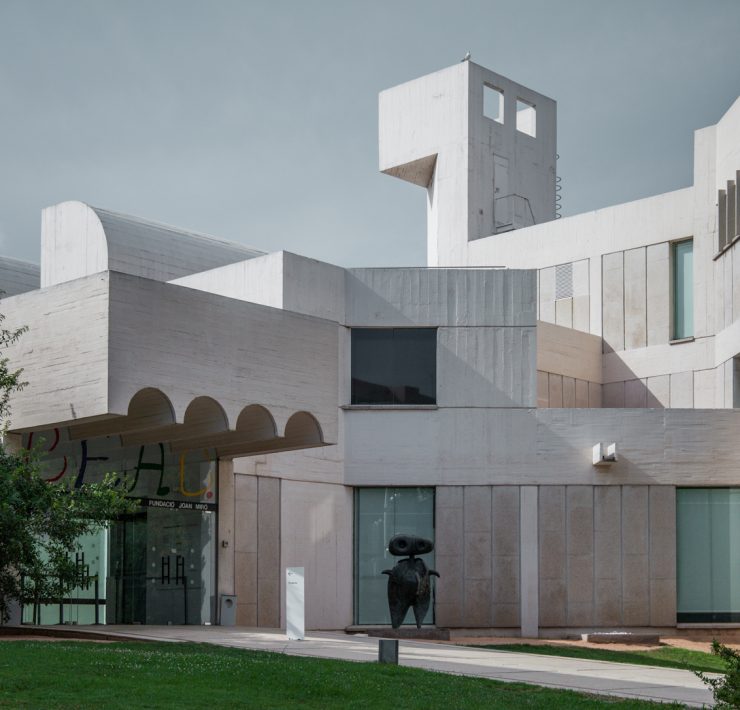Elisava: high impact design, engineering and communication in Barcelona

Albert Fuster Martí. Director académico de Elisava
What does Elisava do?
We conduct training and research into high impact design, engineering and communication.
When was Fundació Úniques founded and when did you start working here?
I started in 1961, when it was still part of the CIC. Its founders included leading lights of Catalan culture, such as Maria Rosa Farré Escofet, Alexandre Cirici Pellicer, and Albert Ràfols-Casamada.
What do you like most about your work?
I enjoy the contact with motivated, inquisitive people who have a sense of ethical, social and environmental responsibility and are able to generate creative projects in very diverse fields. I also appreciate the opportunity to undertake local and international projects with schools, institutions, companies and NGOs. Our intense, high quality work is embodied in products, communication, spaces, and installations.
And what do you like least?
I don’t like having to submit to excessive educational regulations that are based on an unmoving and conventional pedagogical model and hinder the development of open, flexible, and emerging initiatives.
In what respects do you think your organization stands out?
In its exploratory and reflective approach to design and technology, its interdisciplinary foundation, and the direct application of the work to the local and international context.
What is your main challenge?
We try to strike a balance between well-rooted knowledge and the flexibility to adapt to a complex and changing environment. We believe that the academic team, students, and visiting speakers must demonstrate a profound understanding of relevant skills, which can be developed and applied in a very wide range of contexts, processes and systems.
Where is the foundation located? Do you know why this location was chosen?
In the lower part of the Rambla. After starting out on Via Augusta, a few years ago we decided to settle in Ciutat Vella and to take part in the cultural and educational regeneration of this neighborhood. The decision was not without controversy, but it has made it possible to expand and adopt new approaches, both internally in the institution and in the neighborhood.
What do you like most about the neighborhood where you work?
I find it an extremely attractive environment. It's in the middle of the urban bustle and closely connected to cultural institutions, iconic spaces and neighborhood associations that turn any project or intervention into a richer, more complex and powerful process.
How important is Barcelona for your company?
It is essential. Elisava's urban and creative identity can only be understood in connection with Barcelona and its international image. At the same time, I believe that Elisava has played a major part in creating today's Barcelona and plays a significant part in definition of the city we want it to be.
With which city would you compare Barcelona to?
Those that always come to my mind are medium-sized cities, with a strong identity, such as Stockholm, Milan, Boston, and Melbourne, often defined by being the second city of their respective countries. They all benefit from not having governmental structures, and this makes it possible to promote a city based on motivated public and private initiatives and with strong citizen involvement.
What city model should Barcelona adopt?
I think Barcelona has the potential to generate its own style. Even if they are not models as such, I prefer to explore emerging and informal cities such as Medellin, Dakar, and Cairo, cities in which urban life is conducted with a great degree of freedom, rather than cities with a quasi-geriatric aspect such as Zurich or Hamburg.
What best practices from other cities would you like Barcelona to adopt??
I think that cities like Milan or Malmö strike a balance between emerging and collective initiatives, and the desire to be global cities. I believe that a city is a complex, critical and diverse system, which obliges one to act on many levels, from major projects that establish the city’s identity, to specific actions that consolidate the fabric, but question the status quo.
What would you ask of the Barcelona of the future?
A greater intensity in the decisions taken, with the confidence that it is through acting and formalizing decisions that we can test and get closer to the kind of city desired by a wide range of individuals and groups.
If you want to know the latest English news about Barcelona and the people who bring it to life, sign up to our Blog.







